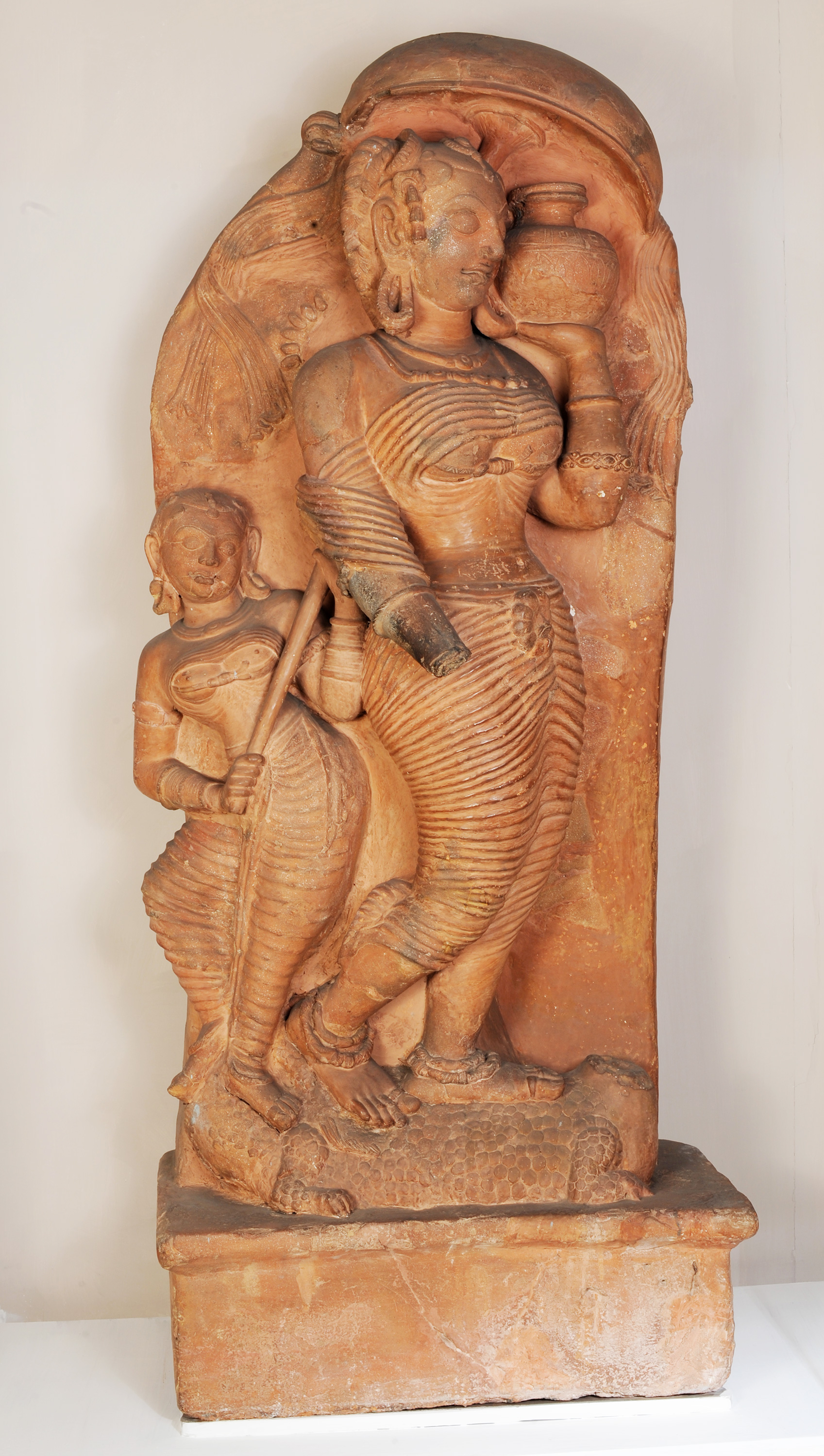Discover, Learn, immerse, Connect
Ganga
This life-size sculpture of Ganga belongs to the Gupta period and dates back to the 5th century CE. It finds its origin in Ahichchhatra, Bareilly, Uttar Pradesh. It is 172 cm in height, 74 cm in width and 40 cm in depth. This sculpture is currently on display at the National Museum, New Delhi.
The Gupta period paved the way for building with lasting materials. This period marks the beginning of Indian temple architecture. The Gupta temples and buildings were made of brick and were adorned with terracotta panels. The terracotta figures of Ganga and Yamuna adorned the door jambs of the shrines of temples. Other terracotta panels from the Gupta period depict other elements such as animals or people. Some panels even depict the battle of Mahabharata wherein warriors are shown to be riding chariots with their bows raised high.
This simplistic yet exquisite sculpture of Ganga, the personification of a sacred river of Northern India is a terracotta sculpture which was found at the entrance of a Hindu temple in Ahichchhatra from the Gupta period. This life-size sculpture used to be paired along with another life-size sculpture depicting river Yamuna. The two holy rivers depicted as goddesses were installed on either side of the entrance of the temples for the purification and enlightenment of the devotees.
Ganga is represented here as a young mesmerizing beauty adorned with jewellery. She is standing on her vehicle which is called Makara (a Sanskrit word meaning "water monster" or "sea dragon" ). In Hindu mythology, a Makara is a sea creature who serves as a vehicle (vahana) for the Ganga, the river Goddess and the sea God, Varuna. Makaras are typically depicted as half mammal and half fish with an aquatic hind portion and a terrestrial head such as that of an elephant. These creatures are the guardians of thresholds and entryways. Here, Ganga is seen wearing an upper garment covering her breasts and a skirt clinging to her body fastened at the waist by a sort of waistband. She is holding a pot of water (kalasha). The graceful posture reflects the peak of creativity and technical perfection of Indian terracotta art in the 5th century CE.
Goddess Ganga is believed to be the goddess of purity and fertility. She is associated with the absolution from evil. Ritual bathing in her waters is an important part of Hindu pilgrimage. Gangajal is also believed to have medicinal and spiritual value.
As per one of the many legends surrounding Ganga, it is believed that Bhagiratha, son of Dilip, worshipped and meditated for years together to bring Goddess Ganga on earth as he was told by a sage that the waters of Ganga who was residing in heaven might release the souls of his forefathers from the cycle of life and get them salvation. When the day came for Ganga’s descent to earth, it was feared that the earth would be torn apart by her force. Thus, Ganga came down and fell on Lord Shiva’s matted hair and then to the earth. Bhagiratha led the way for the river on horseback and the river followed. They finally reached the spot where the ashes of the six thousand sons were laid and liberated the souls.
 Government of India
Government of India



